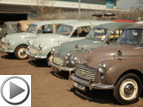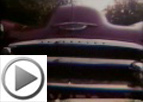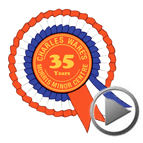Alec Issigonis and the History of the Morris Minor
There is only one other car on British roads today which is as familiar as the Morris Minor, and that's the Mini. That both were designed by the same man is no coincidence, and indeed Sir Alec Issigonis is one of the very few car designers whose name is recognised by the man or woman in the street and not just by enthusiasts or fellow engineers.
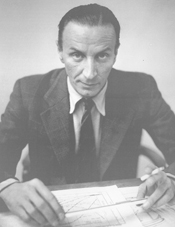 The products of Sir Alec's genius have had a profound and highly beneficial influence on the British motor industry, so it is hardly surprising that it is his first car, the Morris Minor of 1948, which has become the subject of this proposal for a long-life car.
The products of Sir Alec's genius have had a profound and highly beneficial influence on the British motor industry, so it is hardly surprising that it is his first car, the Morris Minor of 1948, which has become the subject of this proposal for a long-life car.
The beginnings of the Morris Minor can be traced back to 1942, with the first prototype appearing in the experimental workshops at Cowley early in 1943-by which time it could be determined that the war would eventually be won, and that a new small car for the peace would be needed, to replace the Series E Morris. Its design had been placed in the hands of the young Alec Issigonis by Nuffield Organisation Vice- Chairman Miles Thomas, who had been quick to perceive an exceptional talent.
The car which gradually emerged from Issigonis's sketch-pad and from engineering drawings prepared by his two right-hand men Jack Daniels and Reg Job, was by the standards of the nineteen-forties unconventional to say the least. Gone were separate running boards and wings, replaced by a highly modern unitary bodyshell which dispensed with a chassis frame and which displayed advanced Transatlantic styling features never seen before on British cars. Additionally, Issigonis had specified uniquely small wheels for the new car, two or even three inches less in diameter than the average, giving it more of a 'big-car' look and doing much to enhance its proportions generally.
Underneath the skin, the new Morris was similarly up to the minute. First and foremost, Issigonis sited the engine right over the front wheels instead of well behind them, much investigation and experimentation having proved that the weight of the engine in this position dramatically improved the stability and controllability of a car. The front wheels themselves were given an advanced torsion-bar independent suspension, which combined with the rigidity of the unitary construction body, gave a standard of ride comfort such as had never been experienced in a small British car before. About the only dated aspect of the Minor when it was announced at the 1948 London Motor Show was the engine, a very orthodox 917cc side-valve unit derived from the Series E Morris Eight and first seen in 1934. Issigonis had hoped to use an all-new 'flat-four' engine but this didn't prove practical, within the deadlines and budget set by Morris Motors, for production use. Maybe it was as well, because the well-proven Morris Eight engine served to give the new Minor an immense degree of reliability from the very start, lacking teething-troubles as it did.
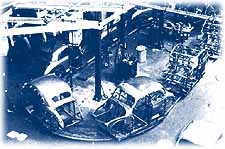 The Minor was certainly a 'new generation' of small car. Not very fast (the side-valve Series MM could lust about manage 62 mph), everyone who drove the new Morris quickly discovered that its sure-footedness and light, rack-and-pinion steering (another innovation for a small car) made it a delight to drive. Other cars felt clumsy and unresponsive by comparison, and Minor owners were soon having fun leaving far more powerful (and ostensibly sporting) cars behind on twisty roads.
The Minor was certainly a 'new generation' of small car. Not very fast (the side-valve Series MM could lust about manage 62 mph), everyone who drove the new Morris quickly discovered that its sure-footedness and light, rack-and-pinion steering (another innovation for a small car) made it a delight to drive. Other cars felt clumsy and unresponsive by comparison, and Minor owners were soon having fun leaving far more powerful (and ostensibly sporting) cars behind on twisty roads.
Eventually, the old engine was pensioned off, replaced during 1952 by the famous 'A' series engine, initially in 803cc form-its use being made possible by the merger of Austin and Morris to form the British Motor Corporation at the end of 1951. The 'Series II’ Minor was announced in July 1952; apart from the power unit, little else was changed.
Then, after a face-lift for 1955, when a slatted grille replaced the mesh-type and the speedometer took up its position in the middle of the dash, the beloved Minor 1000 arrived in October 1956. Gone was the split screen, but much more important was the new 948cc version of the A-series engine. This 'made' the car, which up until then had definitely suffered from a lack of pep, only its nimble handling allowing it to maintain high average speeds. The extra power was even more appreciated abroad, particularly the United States where the additional urge made entering freeways that much less hazardous. In fact, U.S.A. sales peaked in 1959 with a total for that year of 14,991.
A further landmark came as 1961 approached-the millionth Morris Minor was completed, becoming the first British car ever to achieve this production figure. A commemorative batch of 349 replicas were produced, finished in a strangely garish shade of purple and with white upholstery. Quite a few of these special models (which were otherwise standard) still survive.
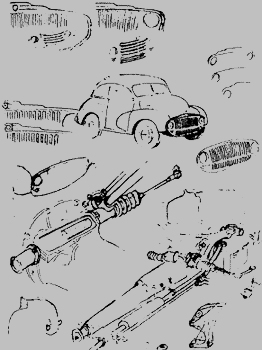 The final large-scale technical improvement for the Minor came in October 1962 when the 1098cc car was announced, the extra capacity being accompanied by a new baulkring gearbox and a much-needed higher final drive ratio. This more than enabled the Minor to keep its place in the small/medium car performance tables and it continued to be a firm favourite with both fleet managers and families.
The final large-scale technical improvement for the Minor came in October 1962 when the 1098cc car was announced, the extra capacity being accompanied by a new baulkring gearbox and a much-needed higher final drive ratio. This more than enabled the Minor to keep its place in the small/medium car performance tables and it continued to be a firm favourite with both fleet managers and families.
But the Minor was not immune from fashion and progress. Inevitably, its market share attacked by such as the new Austin/Morris 1100 (also from Issigonis's drawing board) and later the Ford Escort. Sales declined and although not axed when British Leyland was formed in 1968, the convertible was phased out in 1969, the two and four door saloons in 1970, and finally, the popular Traveller version in 1971. The 'light commercial' variants (van and pick-up) met the same fate, and the end of an era in British motoring had come.
These are the facts behind the Morris Minor; but they hardly explain all of the car's appeal to so many people, an appeal which if anything is growing. To many owners, the Morris Minor is more than a car-it is a familiar, dependable friend that does everything asked of it, and for astonishingly little in return by way of running costs. It is very simple, so there is not much to go wrong, the components used in its construction have been tried and tested over many years of production. So, there are few known weaknesses because the car pre-dates the sealed-for-life approach, most of these components can be lubricated and thus have extended lives. And when something finally does wear out, the chances are that just a bush or a bearing can be replaced, and not the whole unit as with many modern vehicles.
Of course, some people drive old cars for fun, and treat the obvious deficiencies of the machinery as being all part of the game. But apart from the owners of the very early Minors, the slow old side-valve MM's, those with Morris 1000s particularly do not regard their cars as being mobile museum pieces, but consider them to be entirely practical for the new millenium. This is another factor which sets the Minor apart from other old cars designed in the 'forties-thanks to the perception of Sir Alec Issigonis, the Morris Minor has few of the drawbacks of cars dating back to this period. Unlike many of its contemporaries, it has light steering and still-pleasant road manners, it has well-planned accommodation inside, and lacks the thick, ugly door and windscreen pillars that were all too often a hallmark of the early 'fifties.
Add to this the economy of running, an excellent parts situation, and the inherent reliability of the car, and you can see why the Morris Minor remains a favourite with both old and young-from the retired couple with the last car they will ever buy, or the 17- year-old with her first car. For them, it does everything that is required of it. The Morris Minor is a phenomenon, and it deserves to continue its useful role, consuming little in the way of fuel or materials, and giving a great deal in return.




